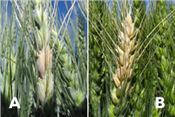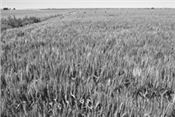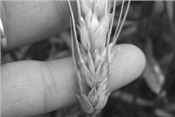|
Current Status Of Missouri Wheat
DR. KAITLYN BISSONNETTE AND GREGORY A. LUCE
COLUMBIA, MO.
Much of the region has had a slow start to the growing season for a multitude of reasons. The most obvious has been the persistent rain that has resulted in saturated ground and continued delays in both in corn and soybean planting. Less obvious have been the developmental delays in the wheat crop with much of the soft red winter wheat acreage is a week to 10 days behind normal throughout much of the Midwest.
The delays in wheat development are due to a number of factors, late planting last fall due to the late harvest and a lingering winter with cold temperatures into the early spring among them. There should not be alarm due to the delay, but we anticipate somewhat later harvest that may impact double crop soybeans. In areas that have not yet reached heading, wheat may be in a better position for the flowering period with less moisture, and therefore lower the risk for head diseases, such as Fusarium head blight (FHB or Scab) (Figure 1). We certainly need it to dry out to resume corn and soybean planting and improve the conditions for wheat development. Currently, wheat fields tend to have more variability in development than is typical. Scouting fields and assessing wheat development for scab management decisions should be top of mind.
Assessing risk of FHB
At this stage of wheat development, it is critical to monitor for risk of FHB as wheat has begun to flower or is approaching flowering rapidly in much of the state. FHB development favors moderate temperatures (75-85°F) and high relative humidity (>90 percent), conditions which are predicted into the coming weeks. It is important to note that relative humidity in the crop canopy can be much higher than relative humidity as measured by free standing weather stations. Evaporating dew coupled with narrow row spacing can easily create a microclimate with high relative humidity in the canopy that does not occur in open air where a weather station may be located. There is a university developed and maintained national Fusarium head blight forecasting system available on the web hosted by Penn State University and supported in part by the U.S. Wheat and Barley Scab Initiative that offers state and region-specific information regarding current and predicted FHB risk. It can be found here.
FHB Risk Map
Preventative action against FHB
Control of FHB requires a multi-fold integrated pest management program. The first line of defense is the selection of wheat varieties with moderate susceptibility or moderate resistance to FHB. No variety is truly resistant to FHB due to the presence of mycotoxins that are produced by the fungus that causes the disease. The most common mycotoxin, deoxynivalenol (DON or vomitoxin), can contribute to quality losses in the grain at the end of the season. In years when FHB levels are high, yield losses due to shriveled, lightweight kernels and DON contaminated grain can be significant. However, the use of a moderately susceptible or moderately resistant variety can significantly reduce yield loss and DON contamination associated with FHB as compared to susceptible varieties.
Fungicides are the second factor to consider as part of a FHB management program. In most of Missouri, now is the time to make decisions regarding fungicide applications for FHB management. There are several fungicides labeled for the control and management of FHB in the triazole class (including Prosaro and Caramba) as well as a newly labeled multi-mode of action product (Miravis Ace) which contains both a triazole and an SDHI component. These fungicides are most effective when applied at Feekes 10.5.1 (50 percent of the plants in the field are beginning to flower). While fungicides provide the most effective control when applied at Feekes 10.5.1, university research has shown that a triazole fungicide applied up to 5 days after Feekes 10.5.1 may provide similar control. It is important to note that strobilurin-containing fungicides are not labelled for control of FHB and, if applied at later growth stages such as Feekes 10.5, and may result in increased DON levels in the grain. Always follow harvest restrictions and label instructions when applying fungicides.
Key take-aways
In the coming weeks, it will be important to assess the effectiveness of FHB management in Missouri wheat fields, especially those at high risk for FHB development. To do this:
1. Scout for symptoms of FHB starting approximately 2-3 weeks following flowering. Symptoms include bleaching of the florets, spikelets, or heads of infected plants (Figure 2).
2. Note the percentage of heads infected in the field and of the infected heads, how severe is the infection.
3. Track the progression of disease during the season (Figure 3).
Understanding the severity and distribution of FHB in season can play a critical role in developing a harvest strategy to reduce losses and increase grain quality. ∆
DR. KAITLYN BISSONNETTE AND GREGORY A. LUCE: Division of Plant Sciences, University of Missouri

Figure 2 Symptoms of Fusarium head blight begin as bleaching of single or multiple florets or spikelets
(a) or bleaching of whole portions of the head (b).

Figure 1 Wheat heads infected by the pathogen that causes Fusarium head blight can be distinguished from
healthy heads by their bleached (blighted) appearance. Note the heads with a whiter appearance amongst
the healthy green heads. Symptoms begin appearing 2-3 weeks following flowering.

Figure 3 As the disease progresses, areas where bleaching occurred may begin to show signs of the fungus,
an orange colored structure called a sporodochia or fluffy white-pink growth.

|
|